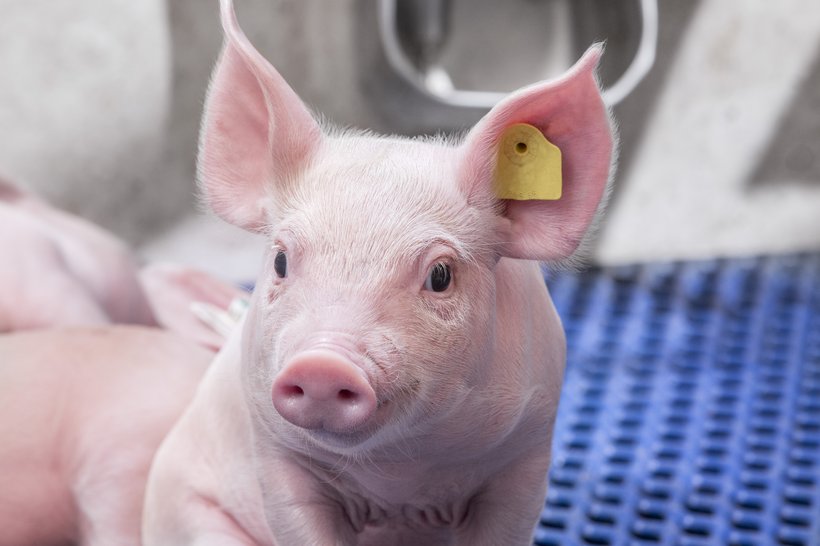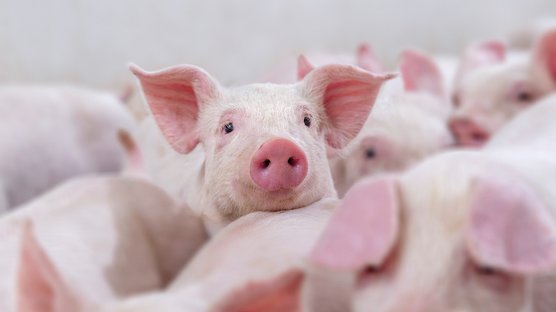
Published on June 9, 2017
New Hypor Libra* Sow Reduces Labor Costs, Increases Profitability
The new Hypor Libra* (pronounced Libra star) sow balances traits in piglet quality, mothering ability and sow longevity to increase the number of pigs that employees can manage and lower the labor costs from farrow to wean.
“The cost for labor is one of the highest expenses on the farm—second only to feed and housing, says Hypor Director of Global Operations Jeroen van de Camp. “We developed the Hypor Libra* to achieve the same production results with a lower labor cost.” By improving the mothering ability and longevity, Hypor geneticists were able to lower the amount of time and labor spent managing gilts and spent in the farrowing room to increase the number of piglets-per-hour. The parameter, piglets-per-hour, is used to calculate the number of pigs that one person can manage. For example: a 1.200-head sow facility that produces 30 piglets per sow a year with 3,5 full time employees (2.070 hours a year/employee) is managing 5 piglets per hour:
1.200 sows x 30 weaned/sow per year = 36.000 piglets produced /yr
3,5 employees x 2.070 hours / full time = 7.245 hours worked /yr
36.000 / 7.245 hours = 4,96 piglets-per-hour.
“If you have a sow that is able to maintain high production with less work and manage herself, then you are immediately paid for the hours with a higher income and less labor expense,” says van de Camp. The Hypor Libra* averages 5 piglets -per-hour on farrow-to-wean operations—the industry average is under 4 piglets-per-hour.
Quality Pigs Require Less Time and Labor
“By increasing the number of piglets the producer can manage per hour, the Hypor Libra* lowers the labor cost per hour to raise each pig by $1,10 USD to $2,42 USD 0,98 EUR to 2,25 EUR),” van de Camp explains. For a 1.200-head sow farm that is producing more than 36.000 piglets a year, saves producers between $39.600 USD and $87.120 USD (€35.280 EUR – €81.000 EUR) in labor costs. To increase the number of piglets per hour, Hypor geneticists select sows that produce large and uniform litters. Geneticists measured the birth weights of individual pigs for several years to select the sows that produce the most uniform litters. Unlike taking the average litter weight, individual birth weights take into account if a litter has small or large pigs—and how that will affect litter uniformity and the number of full value pigs.
Research shows that uniformity is highly correlated with pig quality. Pigs from a uniform litter are more robust, have a higher survivability and are more likely to be rated at full value by the packer according to a presentation at the 2016 International Pig Veterinary Society Congress in Dublin by John Mabry of Iowa State University: How to Deal with Success in Genetic Improvement. “By increasing litter uniformity we were able to reduce the amount of labor spent on cross-fostering and treating challenged piglets,” says Hypor Geneticist Bram Bronsvoort. Quality pigs are better able to take care of themselves—this minimizes the amount of employee labor needed during the pigs’ entire life. Litters that get a healthy start are more likely to maintain a healthy status and good growth rate throughout the growing period. “The good thing about uniformity is that pigs grow at the same rate and reach market weight at the same time,” Bronsvoort says. “This makes them easy to manage as a group because they don’t need extra time or labor to reach finishing weight.”
Sow Longevity, Litter Index Improve Profit Margins
In addition to collecting individual birth weights, Hypor geneticists also measure the 14-day weights of each piglet to ensure that the Hypor Libra* produces quality pigs—and is able to raise them. “The 14-day weights show us how well piglets are growing during the lactation period and allow us to assess the milking ability of the sow,” van de Camp says. "The Hypor Libra* is capable of producing more than 30 piglets a year that reach 14 pounds (6,3 kilograms) in three weeks with minimal cross fostering and without relying on milk replacer". Because the pigs get off to a good start, they are less likely to get sick later in life and ultimately require less labor. “Hypor geneticists carefully select the sows that continue to produce large litters of quality piglets past the first parity,” van de Camp explains. The Hypor Libra* is capable of producing 2,50 litters of quality pigs each year for more than 6 parities. Longevity increases the profitability per sow while at the same time reducing the amount of labor spent on bringing in replacements. This provides pork producers with more time to manage their farm.
Balanced Traits Increase Profit, Lower Costs
The Hypor Libra* increases production and lowers labor costs by balancing traits, such as piglet quality and longevity. “The combination of these traits is only possible when they are highly balanced,” Bronsvoort says. He explains that the Hypor Libra* is extremely good in all of those traits. “To be profitable in the industry today, pork producers need a sow that is able to increase production and lower costs,” Bronsvoort says. “The Hypor Libra* does both and increases Total System Profitability.” The Hypor Libra* is the world’s most ‘prolificient’ sow: the sum of prolificacy and efficiency. She combines 10 years of genetic improvement, state-of-the-art technology and the top Hypor Landrace and Large White genetics to help pork producers to reach for the stars.



